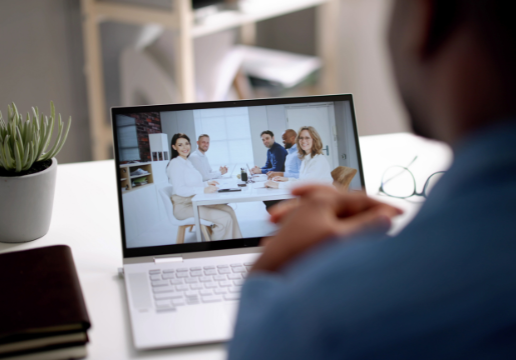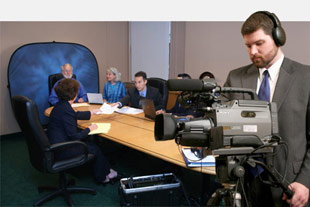Top Benefits of Using Legal Videography for Depositions and Tests
The combination of legal videography right into depositions and trials presents a variety of compelling benefits that can substantially affect the efficiency of lawful procedures. By catching witness testaments in a vibrant format, lawful videography not only boosts the presentation of evidence but additionally reinforces witness credibility via the preservation of both verbal and non-verbal signs. Moreover, the emotional vibration of video can develop a more extensive connection with jurors, ultimately affecting their perceptions. As we discover these benefits better, the implications for legal strategy and court room dynamics become significantly noticeable.
Improved Proof Presentation


In the world of legal process, making use of video clip recordings has changed the method proof is presented in court. Lawful videography offers a vibrant and engaging medium for showcasing important evidence, making intricate info extra easily accessible to courts, juries, and other stakeholders. Unlike conventional written records, video clip recordings catch not just the talked words, however also the subtleties of body movement, tone, and temperament, which can considerably influence the analysis of testimonies and declarations.
Furthermore, video proof enables a more compelling narrative discussion. Via aesthetic narration, attorneys can successfully highlight key aspects of an instance, leading the target market's interest to important minutes. This improved presentation can promote a deeper understanding of the context and ramifications of the evidence being discussed.
Furthermore, the capacity to existing evidence in a multimedia style can simplify the test process, reducing the time required to communicate details compared to lengthy verbal explanations or checking out from transcripts. Generally, lawful videography plays a crucial duty in improving proof discussion, guaranteeing that the details is both impactful and understandable, eventually helping in the pursuit of justice.

Improved Witness Reliability
Using lawful videography substantially boosts the reliability of witnesses during trial proceedings. By offering a visual depiction of a witness's testimony, legal videography permits jurors and judges to view the witness's behavior, confidence, and authenticity. This multi-dimensional presentation can considerably influence exactly how the info is gotten, usually bring about a more desirable perception of the witness.
Furthermore, the tape-recorded video clip records non-verbal hints, such as body language and facial expressions, which can be essential in communicating reliability or emotional deepness. A witness who appears made up and sincere is much more likely to be viewed as legitimate than one who is just heard with audio. Lawful videography additionally gets rid of the potential for false impression that can accompany composed records, as the visual format gives context that supports the spoken word.
Furthermore, the durability of video clip proof strengthens the witness's account, making it harder for opposing parties to test the statement's reliability. By integrating lawful videography into depositions and tests, lawyers can dramatically reinforce the viewed honesty of their witnesses, ultimately boosting the total performance of their case.
Accurate Deposition Records
Exactly how can accurate deposition records affect the result of a case? Exact deposition records play a critical function in next page lawful process, acting as vital evidence that reflects the reputation and integrity of witness testaments (legal videography). These documents give a verbatim account of declarations made during depositions, ensuring that all subtleties, inflections, and contexts are protected. This precision is essential when developing the realities of a case, as it enables attorneys to reference precise expressions or assertions made by witnesses, lowering the danger of misconception.
Additionally, lawful videography boosts the accuracy of deposition records by recording the visual and auditory elements anchor of the testament. This includes body movement, intonation, and faces, which can give additional context to the spoken words. Such thorough records enable attorneys to craft even more engaging arguments, as they can conveniently corroborate claims with direct evidence.
In addition, exact deposition records can simplify the test procedure, decreasing conflicts over what was said and enabling an extra reliable presentation of evidence. Ultimately, the combination of composed transcripts and video recordings promotes a clearer understanding of witness statements, considerably influencing the situation's result.
Emotional Effect On Jurors
Jurors frequently find themselves influenced by the psychological weight of the statements they witness throughout a trial. The visual and acoustic elements of lawful videography improve this psychological vibration, permitting jurors to regard the nuances of witness resource expressions, tone, and body language. These factors play an important role fit jurors' assumptions of trustworthiness and integrity.
When jurors see a witness recounting a stressful experience, the emotional gravity caught on video clip commonly evokes empathy and engagement. This can be specifically impactful in cases where the human aspect is central, such as accident or family members law issues. The capacity to get in touch with a witness's emotions fosters a deeper understanding of the instance, making jurors more probable to connect to the narrative existing.
Additionally, video testimonies can convey a sense of credibility that might be shed in created transcripts or audio recordings. Jurors are not just taking in details; they are also experiencing the tale, which can significantly affect their considerations. By doing this, legal videography serves as a powerful device to stimulate feelings, ultimately assisting jurors toward a more enlightened and thoughtful judgment.
Affordable Litigation Device
Lawful videography not just boosts the psychological effect of witness testaments but likewise works as a cost-efficient litigation device. By supplying an aesthetic record of depositions and testimonies, lawful videography can substantially minimize the costs associated with conventional trial preparation and discussion.
First, it reduces the need for considerable witness travel and holiday accommodations. As opposed to bringing several witnesses to court, their tape-recorded depositions can be played during the test. legal videography. This not only saves money on traveling costs but likewise permits an extra streamlined discussion, as attorneys can concentrate on the most significant statements
In addition, legal videography can limit the amount of time spent in trial. By effectively providing witness accounts and proof, attorneys can accelerate proceedings, which equates to decrease attorney fees and lowered courtroom expenses. Furthermore, the clearness and credibility of video recordings commonly lead to quicker jury decisions, possibly shortening the test period.
In an age where budgets are increasingly inspected, making use of legal videography can deliver significant financial savings while enhancing the overall top quality of a case presentation. Its dual benefits of cost-effectiveness and improved interaction make it a vital tool in modern lawsuits.
Verdict
In summary, legal videography considerably improves the performance of depositions and trials. Its capacity to existing evidence adequately, improve witness reputation, and provide precise documents adds to a much more clear legal procedure. The psychological resonance of video recordings involves jurors, promoting a deeper connection to the case story. Additionally, the economical nature of legal videography enhances litigation, inevitably supporting the pursuit of justice in a much more effective manner.